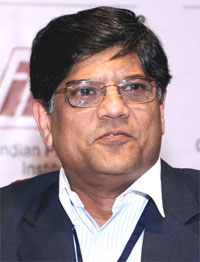|
PACKAGING MATERIAL VENDOR
EVALUATION FOR MEDICAL DEVICE MANUFACTURERS

Mr. Sanjay Shah
Director
Unikal Consultants |
This article covers basics of
packaging material regulatory requirements for
medical device packaging and how to evaluate the
vendor.
Technical information for
specifications is based on the EN ISO standards
and FDA guidelines. The requirements for Indian
Medical Device regulations are based mostly on EU
guidelines. In preparing the article, author has
referred to various standard requirements, vendor
evaluation based on ISO 13485 and online search. I
have interpreted some of the requirements based on
my years of experience as regulatory consultant
for medical device manufacturing facilities.
In present scenario, definition
of medical device and regulatory requirements are
well understood across the board. The same is not
repeated here. Need for extensive medical device
regulations world over and specifically for India
is well justified, my views on the same, some
other time. |
Packaging needs are outlined and
clearly defined in the Indian context and are
described in MDR. Even then, need for vendor
(packaging manufacturer & distributor) evaluation and
basic need to comply to ISO 13485 requirements and
compliance are not understood, even not found
necessary. Why so?
The answer lies in the fact that
packaging was not considered very critical. Even
sterile barrier packaging was thought of as
manufacturer assured. Now requirements for ISO 11607-1
& 2 have been applicable for packaging material.
ISO 11607 are primary standards, which
medical device packaging should meet, viz. it should
be made of known and traceable materials; non-toxic,
non-leaching and odorless. Free of holes, cracks,
tears, creases, and localized thinning. The standard
outlines basic requirements for sterilized medical
device packaging. Sspecifically,
the standard identifies two parts:
The sterile barrier system (SBS),
which protects and “minimizes the risk of ingress of
microorganisms and allows aseptic presentation of the
sterile contents at the point of use”
Protective packaging, an
additional layer which protects the sterile barrier
system.
Together, these elements form the packaging system,
and maintaining its integrity is paramount to safety.
However, one study found that 10% of all medical
device recalls were caused by packaging failures, with
31% of those occurring due to a hole in the packaging
system.
Needs for packaging requirements are part of design
development [ISO 13485’s clauses 7.3.3 a, b and
usability file], but it was not taken seriously, to
say the list. If you asked people what comes to mind
when you say designing a medical device, you’re likely
going to have responses related to design controls or
the device itself. What one is not likely to hear is
packaging or labelling.
Device manufacturers will need to consider the design
and functionality of the device: the specific nature
of the medical device. Some specific areas to address
are:
• What are the intended sterilization methods?
• What is its intended use?
• Where will it be used?
• Who are the end-users?
• How will it be transported?
• How will it be stored and for how long?
• What is the device expiration date?
In that scenario, to understand need for primary &
secondary & outer packaging (box & carton & shipping),
was not even thought necessary. Evaluation process
was, we will go for trial & error method. If box
breaks, user will complain, and we will at the most
replace the box, then we will re-design the packaging.
Thought of validation was difficult to come in the
mind.
What is the Impact of packaging to the device? It
protects, preserves and act as barrier if device is
sterilized or to be used after sterilization. Risk
benefit analysis of the packaging should be always a
part of the CER.
Concept of damage, improper labeling, or partial
damage to the information available was not thought
very critically. “Refer clause 7.5.11 and specifically
clause a) designing and constructing suitable
packaging and shipping containers”
What does ISO 13485 (now accepted world over as a gold
standard) say? It is very clearly defined as referred
above.
Still, it seems that one of the last things on one’s
mind, when designing a medical device is how one is
going to package it. More often than not, it’s because
people underestimate what it takes to design and test
the packaging. Thus packaging design process is all
too often given little attention in the overall
product development process. But with so much riding
on the packaging process & designing decisions at
hand, manufacturers cannot risk letting packaging
become some sort of afterthought.
. |
